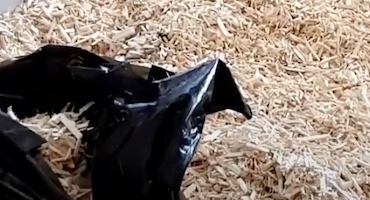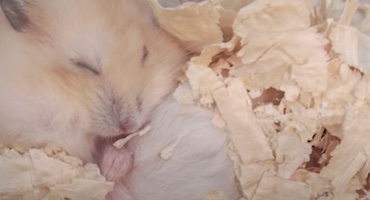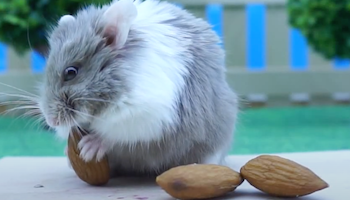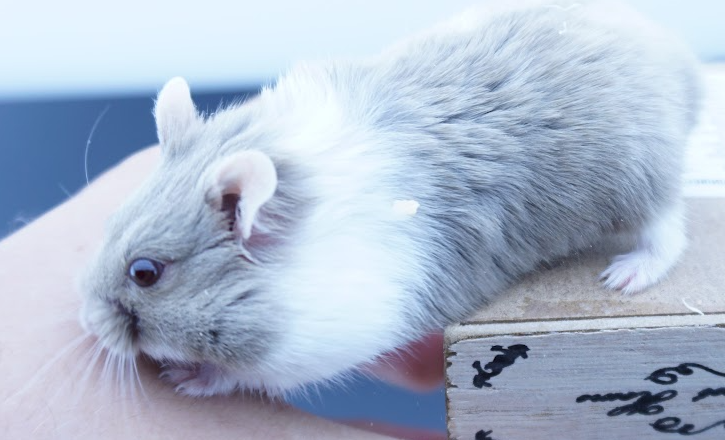Hamsters are small rodents that make great pets. Not only are these furry friends adorable, but they are also very active and entertaining to observe.
All hamsters are nocturnal. As a nocturnal creature, your new pet will be active in the evening and at night. Your hamster will most likely sleep during the daytime hours.
While their natural habitat varies, they can live two to four years in your home with proper care. This short lifespan makes hamsters an excellent choice for a family beginning to take on the responsibilities of pet ownership.
Before deciding to bring a new little friend into your home, you want to be sure you are prepared. Hamsters are relatively easy pets to take care of once you know the basics.
The Big and the Small
Pet stores and hamster breeders have several options when you go to choose a hamster. Many characteristics are the same for hamsters. However, it is important to select the best fit for you.
Syrian hamsters are the largest hamster found in most pet stores. They are often called teddy bear or golden hamster due to their golden-brown coat. These furry friends have a stout shaped body.
An average Syrian hamster will weigh about 5 ounces and measure 5-7 inches. Even though they are larger than some hamster breeds, they are still the perfect size to hold in your hand.
On the smallest end of hamster breeds, comes the Chinese hamster. Many people classify these rodents as dwarf hamsters, but they are a not pure dwarf breed.
Unlike the Syrian hamster, Chinese hamsters weigh around one ounce. They measure 2-3 inches in length.
One distinguishing trait of the Chinese hamster is their long tail. These pets also have a dark black line of fur along their back. The remaining hair on the Chinese hamster is a dark brown color.
Dwarf Hamsters
Pet stores often carry a variety of dwarf hamsters. These small hamsters make great pets. It is often difficult to tell some of the breeds apart from one another.
If you are new to the responsibilities of pet ownership, the Winter White dwarf hamster may be the right choice. These hamsters have the shortest lifespan of most hamsters. They generally only live a year and a half.
Winter White hamsters measure about 2-3 inches and length and weigh one ounce. Although they can be timider than other hamsters, Winter Whites make great pets.
The Winter White hamsters have the fantastic ability to change their fur color. They sport a brownish coat during the summer months and a white coat during the winter months.
This ability to have white fur during the winter months helps them blend into the snow in their natural habitat. With this camouflage, they are better able to hide from predators. If you bring home a Winter White hamster, they will probably not experience this coat change.
A close relative of the Winter White dwarf hamster is the Campbell dwarf hamster. It is likely that you see a cross-bred hamster at your local pet store.
The Campbell dwarf hamsters weigh in at around one ounce. These furry friends grow up to about two inches in length.
The color on a Campbell dwarf hamster will vary. Most commonly, you will find a gray-brown coat with a light grey belly.
Roborovski, or Robo hamsters, are a favourite pick for a dwarf hamster. This breed is the smallest of the dwarf hamsters. These tiny rodents weigh in less than one ounce and are no more than 2 inches in length.
With a natural habitat of the desert, the Robo hamster is sandy brown. This sandy-colored fur helps them to blend in and avoid predators. With some cross-breeding, it is possible you will find a Roborovski hamster with a different color coat.
Unlike many other dwarf breeds, the Robo hamster does not have the dark dorsal line of fur on its back. The lack of this coloration and the small size of the Roborovski hamster are what make it stand out in the dwarf hamster realm.
Handling Your New Hamster
Some people may describe hamsters as “nippy.” However, if you tame your new hamster and handle it correctly, they are great family pets.
Like most small rodents, hamsters are speedy and agile. Hamsters are also very active. The more you can handle your new pet, the more friendly it will become.
To safely handle your hamster, there are several steps you want to follow. Be patient and consistent when handling your new pet. It is crucial that you commit time to tame your hamster.
First, resist the desire to hold your hamster the first day you bring it home. Give the new pet a couple of days to adjust to its new surroundings.
After a couple of days, begin to talk to your hamster after a few days in a gentle voice. You can reach your hand in the cage to change the water or replace the food. This motion allows your new pet to get comfortable with your voice and hand.
By now, the hamster will be familiar with your presence. Try placing a small seed or treat in the palm of your hand. Lower your hand into the cage and wait until your curious pet approaches your hand.
The rodent’s natural curiosity will likely cause it to crawl onto your fingers. Allow your pet to explore without any sudden movements.
If the hamster does nip your hand or finger, don’t panic! Slowly move your hand out of the cage and try again later.
Once your hamster feels comfortable with your hand, gently raise it a few inches in the cage. It is okay if your new pet jumps off of your hand. Allow it to jump off and try again.
Eventually, your hamster will allow you to raise your hand slowly without jumping off. Once that takes place, you can try to pick up your hamster.
Be sure to start with a surface below you in case the new friend escapes your grasp. Gently cup the hamster in the palm of your hand. Your hamster will enjoy you gently stroking its back.
The more time you commit to taming your hamster, the more friendly it will become. It is best to tame a young hamster before it develops any aggressive habits.
Due to their quick nature, it can be challenging for young children to handle hamsters. Be sure to help provide a safe setting with your child to teach them proper handling.
Hamster Curiosity
Even with precautions, your hamster may escape your grasp or its cage. Be sure that you secure the lid on the cage at all times. Allowing your new pet time in a hamster ball will also help satisfy this natural curiosity.
If your hamster does escape, you can use a “no-kill” trap to help capture your pet. This trap typically has a door that will close the hamster inside. You can place a small carrot and some bedding in the trap to keep them comfortable until you release them.
You can also play on their curious tendencies by creating something they may be attracted to lure them back. For example, a large stack of books with a piece of wood may bring your little friend right back. This setup should be placed near the cage so you can easily place your pet back home.
Housing Your Hamster
Hamsters make a great small pet. Despite their small size, it is essential to provide your new pet with proper housing.
The minimum size for a single hamster home is 12 inches by 24 inches. This size allows your new pet room to sleep, burrow, eat, and play.
Put your new hamster home in a safe place in your home. Be sure not to put your new cage right next to a window. This could cause your new pet to get too hot.
Pet stores sell a variety of cages. You want to consider the best cage for the breed you select. Many dwarf hamsters are too small to be safe in a metal cage.
Plastic cages and aquariums are often the safest choices to house your new hamster. Be sure the lid has plenty of ventilation for your pet. These cages are also easier to clean than some options.
The bottom of your new pet’s home should be covered. Aspen shavings, shredded paper, and hay provide comfortable places for your hamster to snuggle up and sleep. Be sure not to use any cotton within your pet’s cage as it can be a choking hazard.
Ceramic huts provide an excellent place for your hamster to sleep. Pet stores will carry a wide array of cute hamster sleeping houses.
Hamsters generally prefer to be housed alone. Some breeds such as the Roborovski hamster can be housed with same-gender cage mates.
If you want to house multiple hamsters together, be sure to purchase a bigger cage. You should house your hamster with same-sex peers. It is more successful if the hamsters share their home from a young age.
With pairs or groups of hamsters, aggression is possible. Be sure to keep ou close watch on your cage mates for any sign of violence. If you see this, separate the hamsters immediately to prevent deadly harm.
Toys and Exercise
Hamsters are naturally curious and active animals. You want to provide your new pet with plenty of opportunities to play and exercise.
Tubes are one of your hamster’s favourite toys. With the instinct to burrow, tubes provide your new pet, endless entertainment, and shelter.
Pet stores sell plastic tubes in many colors and sizes. While these can be fun for your new pet, they can also be challenging to clean. One cost-effective option is cardboard tubes from toilet paper or paper towel rolls.
A hamster wheel is an essential part of your new pet’s exercise routine. With the ability to run several miles a day, a hamster wheel provides your pet with excellent exercise. You can find these wheels at most pet stores.
Choosing a plastic hamster wheel is the best option for your small pet. This type of wheel prevents your hamster’s feet from injury.
You also want to choose a wheel the proper size for your breed. Selecting a wheel that is too large could result in your hamster having an injured back.
Hamster balls are clear plastic balls big enough to put your hamster inside. These are fun toys both for the hamster and you as the owner. Watching them roam your home in a hamster ball is an excellent bonding exercise for your new pet.
Along with needing lots of exercise, your new hamster also needs to chew. Chewing helps keep your new pet’s teeth healthy. It is like brushing their teeth!
You can purchase wooden bridges, ladders, and other wooden toys at local pet stores. These provide a chance for your new friend to gnaw and climb. Most of these toys will last several months.
Be sure to keep an eye on your hamster’s toys. If you notice a broken toy, remove them from the cage immediately. You also want to clean your pet’s toys as often as you clean their cage.
Feeding Your Hamster
Hamsters are omnivores who need a balanced diet to stay healthy and happy. Your new pet will enjoy a variety of seeds, fruits, and vegetables.
Local pet stores sell bagged hamster food that your pet will enjoy. Be sure to read each package carefully. Much of the food is breed specific, so you want to choose the best food for your hamster.
You will have to choose between a seed mix or pellet food for your new hamster. Seed food will provide your hamster with the nutrients it needs. Your new pet may become picky and only eat its favourite seeds.
If that is the case, you may want to switch to pellet feed to provide a more balanced nutrient base. Pellet hamster food looks like a small hamster-sized cookie or biscuit. This nutrient dense food will ensure your new pet with a balanced diet.
In addition to hamster food, you can give your new pet special treats. Hamsters love many fruits and vegetables. You can give your hamster a treat one or two times each week. Be sure to thoroughly wash any fresh produce before feeding it to your new hamster.
Favourite treats for your new pet include cabbage, bananas, carrots, and apples. Be sure to give your hamster only a small portion. A right size treat would be about one teaspoon.
When you first bring your hamster home, observe which foods they will eat. If your hamster does not eat the treat that day, remove it from their cage.
There are some treats you should avoid. Do not give your new hamster any citrus fruits such as oranges. You also want to avoid any sweets, peanuts, or onion.
Providing your hamster with plenty of fresh water each day is also a part of a balanced diet. You can place a ceramic bowl of water for your hamster. You may also choose to purchase a plastic hanging water bottle to attach to your hamster’s cage.
We have loads of information about hamster food & diet on in our “Food & Diet” section of the website – jump on over and take a look for more info & ideas for varying your hamsters diet.
Hamster Health
All breeds of hamsters can experience health problems. Even though hamsters have a short life expectancy, you want to ensure to keep your new pet healthy.
When you are choosing a pet at the pet store or breeder, you want to select one that looks healthy. Be sure you pick a hamster with shiny skin and bright, opened eyes. Ideally, you want to choose a hamster that looks active.
It is also a good idea to choose a young hamster. If you get a young hamster, it will help with the process of taming your new friend. A young hamster is also less likely to come home with you pregnant.
One common illness that you may experience with your new pet is “wet tail.” This illness is a hamster case of diarrhea. You will be able to tell that your rodent friend is experiencing this condition when they display a hunched appearance and have wet fur under their tail.
If you see the symptoms of wet tail in your new hamster, you should bring your pet to a veterinarian for care. The vet will be able to prescribe medication to help your new pet recover quickly.
Hamsters commonly experience respiratory problems. You will see symptoms very much like a human. If you notice nasal discharge or sneezing with your new pet, you also want to seek medical attention.
Dental hygiene is of utmost importance for your small rodent. Hamster teeth continue to grow during their entire lifetime. Along with wooden toys, dog treats provide an excellent way for your hamster to file down those teeth.
Breeding Hamsters
Hamsters reach sexual maturity at a young age. It is not common for a pet owner to breed hamsters. Hamster breeders take special care to breed hamsters safely.
Female hamsters are in heat every four days. It is during this time that you can breed a hamster. It is wise to wait until your hamster is at least three months old before breeding your female.
When the female is in heat, you can introduce a male hamster to the female. This introduction should occur in a separate, neutral space. The male will mount the female several times.
The mating process can take 20 minutes to over an hour. Be sure there is plenty of soft bedding in the container during this time.
If your female becomes pregnant, the gestation period is 18-23 days. It is possible to bring home an expectant mother hamster from a pet store.
You will see visible signs of pregnancy, such as a growing body. If your female hamster is pregnant, she may also drink excessive amounts of water or rearrange things in the cage.
To help your hamster have a safe delivery, be sure to clean out her cage thoroughly during pregnancy. Replace any old or dirty bedding with plenty of soft spaces for the new pups.
Removing toys that may be dangerous for your hamster’s new pups is also essential. You may want to remove the hamster wheel to prevent injury.
Do not reach into your pregnant hamster’s cage the last few days of pregnancy. If the new mom picks up a human scent on her pups, she may reject the new baby.
Hamsters typically have 3-7 liters in their lifetime. These liters usually bring 4-9 new hamster pups into the world.
When the new pups do arrive, they will be born with no fur. The pup’s eyes will also be shut. Their eyes will begin to open, and hair starts to grow within the first few weeks of life.
Resist the urge to pick up the new pups after they are born. You want to give the new little arrivals two to three weeks before entering their environment. This time will help ensure the mother does not reject her new babies as a result of human scent.
Once the babies are around three weeks old, you should remove them from their home. Since many breeds tend to be aggressive with opposite gender pairs, you want to separate the sexes. Things should remain peaceful if you place same gender hamster pups together in a new home.
Be sure to keep a close watch on your new mom and pups in the first weeks. If you see any signs or danger, place the hamsters in separate spaces.
More information about breeding hamsters and what to do when your hamsters have babies is available in our Breeding and Baby Hamster guides section of our website.
Choosing a hamster as your next pet is an excellent decision. Not only are these furry rodents cute, but they are also fun. With proper handling, they can make great friends to everyone in the family.
Be sure to select the best breed for your home. Make sure you purchase an adequate cage, nutritious food, and a new water container. Have fun enjoying your new pet!






